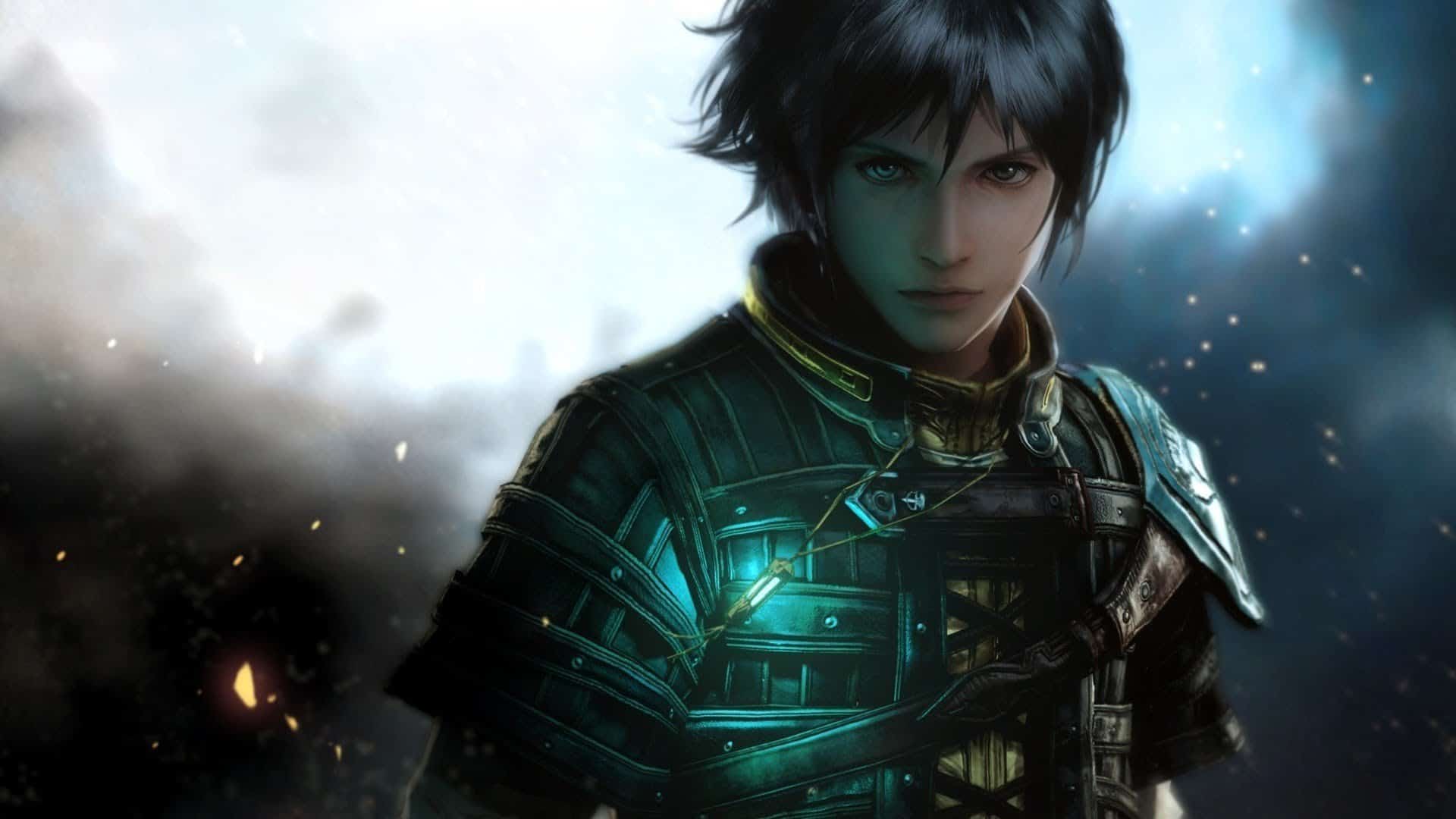You can trust VideoGamer. Our team of gaming experts spend hours testing and reviewing the latest games, to ensure you're reading the most comprehensive guide possible. Rest assured, all imagery and advice is unique and original. Check out how we test and review games here
We gave 360-exclusive Japanese role-playing game The Last Remnant a 7/10 review score back in November last year. We praised it for its interesting combat system and occasionally impressive graphics but, ultimately, the game was let down by crippling performance issues and a distinct lack of innovation. Now, half a year later, Square Enix is bringing the game to the PC with a number of key improvements that do improve matters, but ultimately don’t justify the game achieving a higher review score.
But first, a catch-up. The Last Remnant is designed to appeal to Westerners in a way Square Enix’s previous role-playing games haven’t, but we can’t see much of a difference except that there’s unrealistic looking and sounding blood (the first time blood has ever appeared in a SE game). The Conqueror, The Last Remnant’s big bad guy, has apparently been designed with Westerners in mind, but it seems all that’s different between him and FFVII’s Sephiroth is that he’s older and more muscular. And the motion capture has been done with Western actors, another first, but you’d be hard pressed to tell.
The complex, 60 hour story is classic JRPG – an enthusiastic teenage boy, in this case called Rush Sykes, sets forth on a save the world adventure after his sister is kidnapped by awful beasties. He eventually meets up with the brilliantly named King David (called Dave by Rush), whose Western voice actor can’t seem to decide whether he’s Captain Jack Sparrow or Will Turner. Together with Dave’s four generals, Torgal, a four armed cat thing, Blocter, a huge tank class with platypus lips, Emma, a matriarchal humanoid with a sexy posh English voice and Pagus, the love child of Kermit the Frog and Jar Jar Binks, Rush plays a key role in a war over the Remnants, powerful artefacts that can be used as powerful weapons. Because we’ve seen this kind of set up in a million JRPGs before The Last Remnant’s story is depressingly predictable. Dogged fans of the genre will like it of course, but we’re getting tired of playing annoying teenage leads in coming of age adventures.
Exploration also offers little new. From a third-person perspective Rush runs about town, talks to NPCs, sells bits he’s picked up on his travels, buys stuff, improves the quality of his existing equipment (party members look after their own equipment, in keeping with the hands-off nature of the game) and embarks on side quests (which automatically teleport you to the appropriate area and back when finished, giving the game an odd, disjointed pace). Out in the wild, The Last Remnant feels very FFXII, granting the ability to run by monsters and pick and choose your fights. This doesn’t prevent you getting bogged down in the ‘grind’ though. There are boss fights and core story dungeons that force you to go off somewhere and level up for a few hours in order to make them beatable. Again, there will be fans of the genre who enjoy this, but we’ve been here, done that and got an inventory full of t-shirts. If nothing else, The Last Remnant hammers home the uncomfortable truth that SE JRPGs haven’t significantly evolved since FFVII, and that game’s over 10 years old.
The Last Remnant battle system, developed by Kazutoyo Maehiro, the brains behind the love it or hate it Final Fantasy XII combat system, is a refreshing fusion of traditional JRPG turn-based combat and more large scale combat. This ‘Gambit 1.5’ system, described so by art producer Yusuke Naora because of it’s similarity to FFXII’s AI-reliant system, is far and away the best thing about The Last Remnant, and is just about the best JRPG-related mechanic Square Enix has drummed up in the yawning chasm that has yet to be filled adequately between Final Fantasy XII’s release and the second coming that is Final Fantasy XIII’s release.
Units in The Last Remnant are grouped together in Unions, which include up to five party members. You can control up to five of these Unions in any given battle, meaning that at maximum capacity there can be a whopping 25 units under your control. When you consider that you can link together up to nine enemy unions into a single fight using an MMO-style pull system, you can find yourself thrust into massive 70 unit scraps reminiscent of pitched battles between rival secondary schools on the local common.
If you were required to micromanage every unit in real time The Last Remnant would probably melt your brain. Luckily Maehiro-san has simplified matters somewhat by allowing the player to give general commands to Union leaders every turn, allowing you to sit back and watch the camera dart about the battlefield as the AI takes over. At the beginning of each turn you have a certain amount of Action Points (AP) to spend on either Combat Arts (melee based attacks) or Mystic Arts (essentially spells). A list of possible commands is displayed on the right of the screen, and you simply scroll through them and pick one. You’ll have ‘Attack with combat arts’ and ‘Attack with mystic arts’, but you’ll also have some other commands which are context sensitive. Say, for example, one of your Unions has taken a bit of damage, the command ‘Keep you health up’ will present itself, but it wouldn’t have otherwise. At no point, however, does the combat allow you to hand pick specific attacks or spells. All you can do is have a look at what arts a particular command will have the units in a Union do.
This hands-off approach certainly takes a bit of getting used to, and at first you might be frustrated at how random everything feels, but you do get used to it and, after extended play, it becomes oddly addictive, and, somehow, doesn’t get old, even during the pits of grinding despair.
So, what’s new for the PC version? Square Enix has completely eradicated the crippling technical issues that plagued the Xbox 360 version. On the 360 and uninstalled, The Last Remnant suffered from awful slowdown, horrible texture pop in and tiresome loading. During battles that involved more than four or so Unions, the game slowed to a crawl when anything other than a simple sword slice was triggered. Character and environment textures sometimes popped in five seconds after a scene loaded. And the game loaded what felt like every five minutes – before a fight, after a fight, in between cut scenes… all the bloody time.
On PC, these issues are redundant (there’s still a hint of texture pop in – this is an Unreal Engine 3 game after all). So right from the off the lack of slowdown makes the action quicker. But SE hasn’t stopped there. It’s implemented a Turbo Mode, letting you quickly advance battles, the camera shifting across the battlefield like a fly on speed. Fights hurtle along at such a pace now that they almost feel comical.
Another useful addition is the ability to add any number of leaders to your unions. In the 360 version there were limits on the number of leaders you could have in your party, which meant you were forced to fill unions with generic recruits. Not only does being able to fill your force with proper characters make your team tougher, but it helps you engage with proceedings because they all have back stories, personalities and voice over dialogue. And finally, SE claims the character animations have been improved, but I didn’t notice any difference. Better is the option to select Japanese or English voice-overs, an addition that’s sure to please hardcore JRPG fans.
Ultimately though, the primary complaint we had with The Last Remnant on Xbox 360 rings true of the PC version: The Last Remnant is a stale JRPG with interesting combat and lovely graphics. The PC isn’t exactly inundated with JRPGs, so for some it will feel fresh and vibrant. If the only thing that prevented you from picking up the game on 360 was the technical issues, then The Last Remnant on PC is for you. But, as was the case with the 360 version, it’s hard to recommend if you’re anything but a die-hard SE JRPG fan.

/https://oimg.videogamer.com/images/db21/the_last_remnant_15-68381.jpg)
/https://oimg.videogamer.com/images/e2eb/the_last_remnant_9-68375.jpg)
